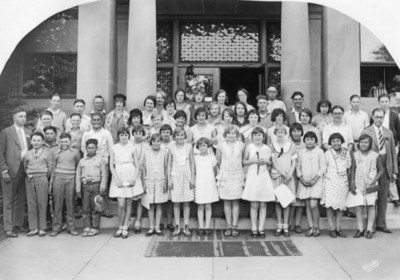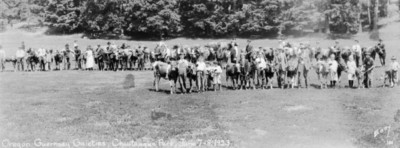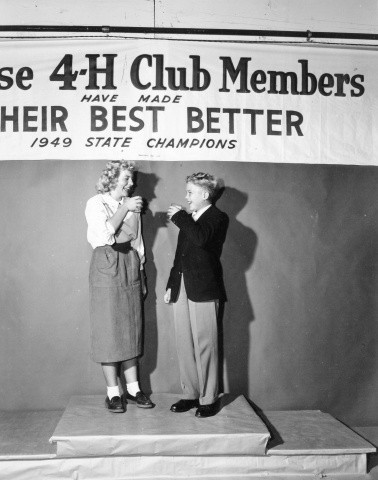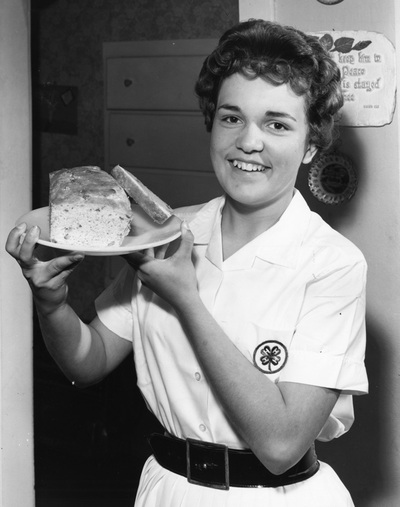The Boys’ and Girls’ Club was boosted with the passage of the Smith-Lever Act, which included a charter to support the work of youth clubs involved with agriculture, home economics, and related subjects. With the passage of the act, Oregon’s local Boys’ and Girls’ Clubs merged into a national network of similar clubs that was formally recognized as the 4-H Youth Leadership program by 1924 with the adoption of the iconic cloverleaf emblem.
By 1916, more than 11,000 students participated in 4-H clubs! The clubs in the early period were primarily run by local teachers with interested community members serving as club leaders and advisors. During the 1918-1919 school year Portland became the first major city in the nation to extend 4-H programs to urban youth. The victory gardens planted on Portland school grounds during WWI were a popular project that drew many students to the organization.
During WWII, 4-H members were active in their support of American war efforts at home and abroad. Club members helped with scrap drives, volunteered in the fields harvesting crops, and grew their own victory gardens. After the war, the scope of 4-H was expanded to include subjects like nutrition, natural resources, plant and soil science, and the animal sciences. Beginning in the 1980s, there has been an increase in science, engineering, and technology programs. Today, 4-H is the largest out-of-school youth program in the United States, serving 6 million members nationwide. In Oregon, the 4-H program currently reaches more than 100,000 members with the support of more than 6,000 adult volunteers.
4-H Documents in ScholarsArchive@OSU
Industrial clubs and contests for Oregon boys and girls, 1914.
Suggestions to teachers for organizing industrial clubs, 1914.
Information for you about 4-H club work, 1930.
Songs and yells for Oregon 4-H club members, 1930.




